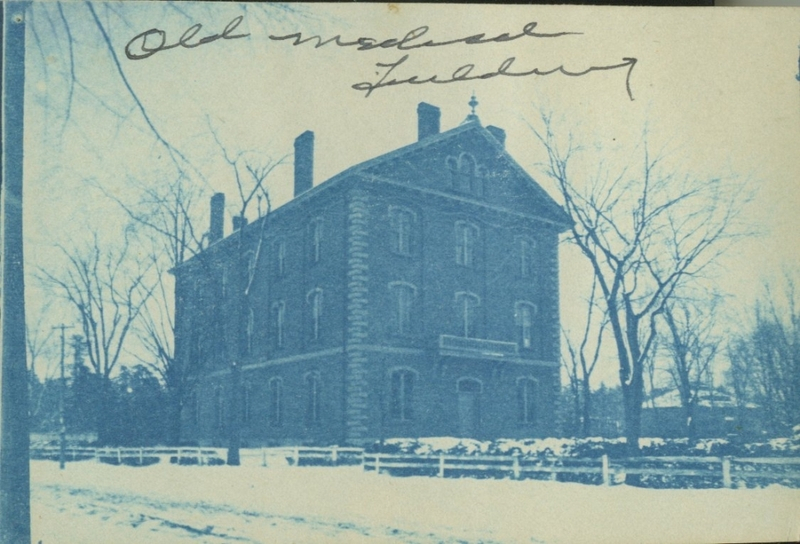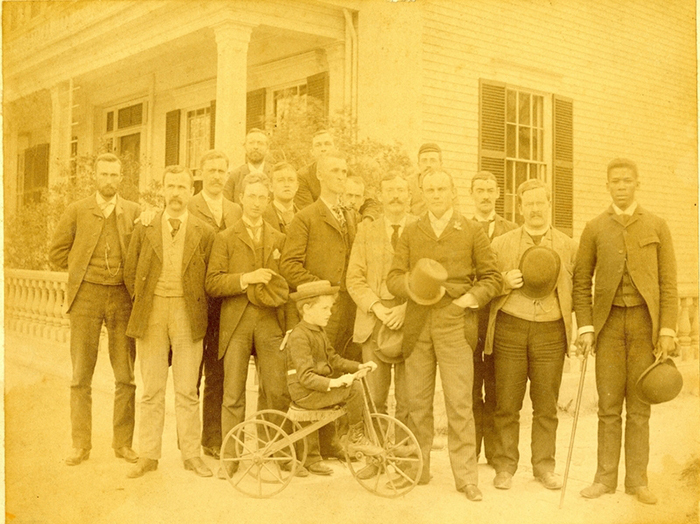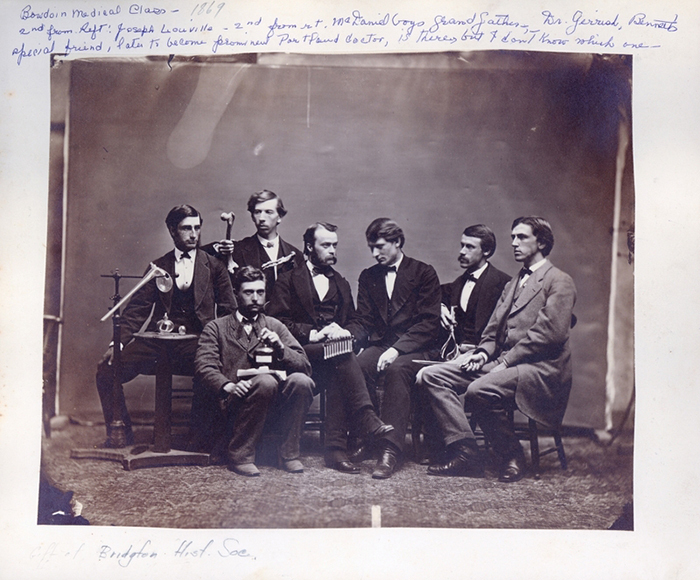Celebrating Maine’s First Medical School
By Tom PorterWhen Maine achieved statehood in 1820, one of the first things legislators did was establish the state’s own medical school, said Marieke Van Der Steenhoven. “The school’s creation was inextricably tied to Maine’s independence from Massachusetts and the desire of this new state to train its own doctors.”
What better place to do this than at Bowdoin College, where medical students could have access to a wealth of intellectual resources? The Medical School of Maine was established in June 1820 and, during its one hundred and one years of existence, was situated on the Bowdoin campus.
“It was an interesting relationship,” said Van Der Steenhoven, “because, although the medical school was not actually part of Bowdoin, it was overseen by the College president and its governing board.”
Furthermore, she explained, Bowdoin faculty would sometimes lecture at the school—notably Bowdoin’s first professor of mathematics Parker Cleaveland, who also taught natural history—while Bowdoin undergraduates would often attend classes there without taking the medical degree. These included Henry Wadsworth Longfellow, Nathaniel Hawthorne, and John Brown Russwurm, who all attended lectures in the 1820s. In the case of Russwurm, this made him one of the first Black students in the country to receive formal medical instruction.




Van Der Steenhoven is special collections education and outreach librarian at Bowdoin’s George J. Mitchell Department of Special Collections & Archives, where a new exhibition about the medical school recently opened. “This is the first major physical exhibition since the pandemic struck,” she said. “The last one was about Maine and its journey toward statehood, so this seems like an ideal follow up.”
The exhibition draws on materials from Special Collections & Archives to examine the establishment and demise of the school, the faculty, and the curriculum, as well as the students themselves and the tools they used. “During its century of existence, the school educated around two thousand physicians, who not only served the state but also practiced medicine across the world,” said Van Der Steenhoven. Among them, she explained, were the second and third African Americans to graduate from an American medical school: John Van Surly DeGrasse and Thomas Joiner White, both Class of 1849.
“Their story is fascinating, as they are among those African American doctors whose medical training was funded by the American Colonization Society in its efforts to train Black doctors in the US for work in Liberia,” said Van Der Steenhoven. (Note: the African republic of Liberia was established by the society in 1847 as a settlement for freed American slaves.) “Neither of them ended up going to Liberia, but DeGrasse especially had an interesting life,” she said. The grandson by adoption of a French admiral, DeGrasse also studied in France and New York and went on to serve in the US Civil War as an army surgeon.





The experience of a nineteenth-century medical student was a far cry from that of his modern equivalent, said Van Der Steenhoven. “The medical degree was considerably less than the four years it takes today. No premed degree was required, and the students would attend two twenty-week terms, going to lectures, studying books, and giving recitations for the theoretical side of their education,” she said. “For the practical side, they were given cadavers to dissect, but also required to work, effectively, as interns with practicing doctors. In the 1880s, Maine General Hospital in Portland—now Maine Medical Center—became the clinical facility for Maine medical students after the construction of a surgical amphitheater there to observe procedures.”

The exhibition also highlights notable ethical differences in the behavior of late nineteenth- and early twentieth-century medical students compared to today. It was not uncommon for students, including those in Maine, to pose with the cadavers they were using for dissection, and a number of photographs on display in the exhibition illustrate this tendency. “Although this may seem macabre and unethical by today’s standards,” said Van Der Steenhoven, “students often displayed these cadavers to demonstrate pride in their achievements.”
The demise of the Medical School of Maine, and others like it across the country, began in the early twentieth century, said Van Der Steenhoven, when medical schools came under increased scrutiny from the authorities, who felt training standards for doctors should be more thorough and more uniform. “A wide-ranging review of medical schools in the US and Canada was conducted. Known as the Flexner Report, it was hugely influential in the status of many medical schools,” she said, “requiring the American Medical Association to provide gradings. Before the report came out in 1910, there were 155 medical schools in North America. By 1923, there were only sixty-six.” Among the casualties was the Medical School of Maine, which closed its doors for good in July 1921.
The exhibition also explores the impact of the 1918 influenza epidemic on both Bowdoin College and the Medical School of Maine through the papers of natural sciences professor Marshall Perley Cram, who served on the faculty of both institutions. “At the start of the pandemic, archivist Caroline Moseley identified materials in the archives that reflected on the 1918–1919 epidemic, and Cram’s diary provides an incredible day-to-day perspective on how the epidemic affected Bowdoin and the Brunswick community,” said Van Der Steenhoven. “This part of the exhibition resonates powerfully with what’s happening now regarding the COVID-19 pandemic. It shows how the College community navigated unprecedented times, as we are also doing today.”
The Medical School of Maine, 1820–1920 is on display on the second floor of the Hawthorne-Longfellow Library until the end of the semester. The exhibition can also be enjoyed online.
Want to read more about the Medical School of Maine? Check out this Bowdoin Magazine article from March, 2020.